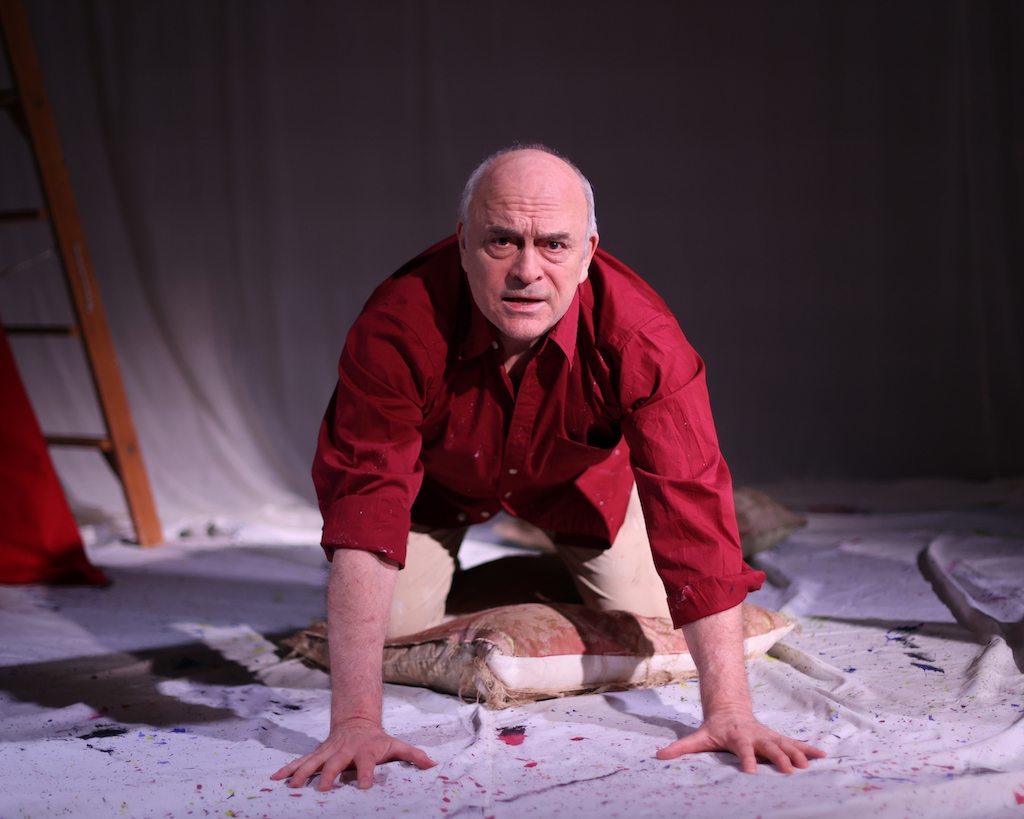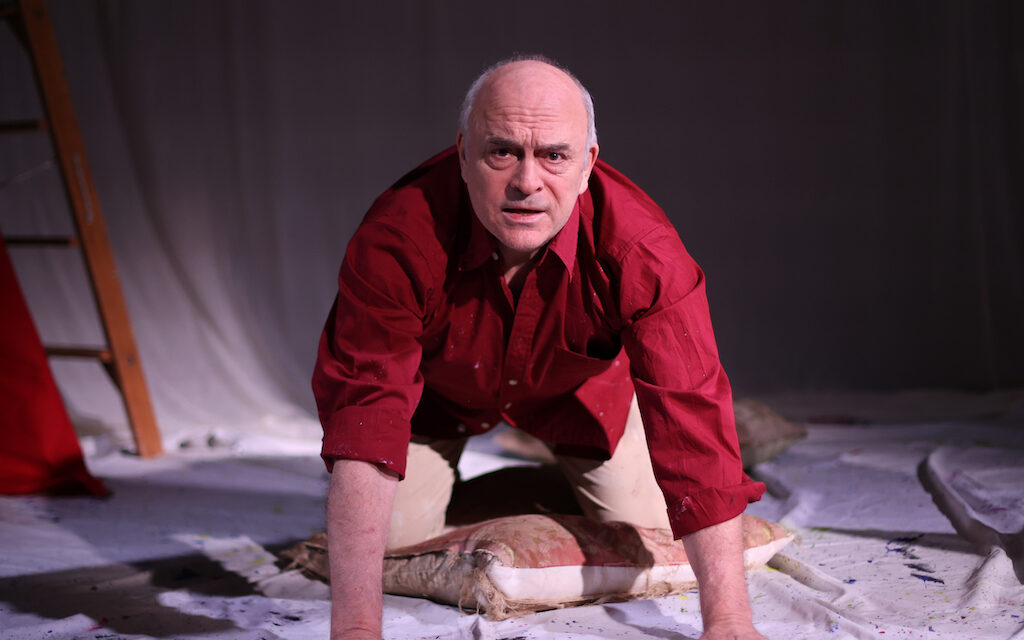
2 – 5 April
‘I have a magic power that even I cannot understand.’ Thus Picasso asserts the mystery that lies at the heart of his genius. Yet Terry d’Alphonso’s play Picasso: Le Monstre Sacré goes some way towards solving that mystery. We learn that as a very young child he was traumatised by witnessing his mother give birth. The pain and blood of that event combined with the loss of his mother’s exclusive attention, for she now had an adored daughter, appears to have set him on a path of destructive misogyny as he searched for the perfect love to replace that loss. It also, of course, appears to have been the spur that drove him on to a career of brilliant, obsessive creativity.
Peter Tate is thoroughly convincing as the narcissistic artist, embodying the stamping rage of an angry bull one moment, and a matador’s deadly grace in the next. There are moments of flamenco-like dance, all strutting arrogance. He performs on a simple set consisting merely of a white sheet hung behind a wooden stepladder. The focus therefore is very much upon the man himself, though at times filmed sequences are projected on the sheet that give glimpses of the women who featured so prominently, and often so tragically, in his life. Directed by Guy Masterson, himself an accomplished performer in one-man shows, Picasso: Le Monstre Sacré gives us an opportunity to judge whether Picasso’s utterly selfish treatment of women was a price worth paying for the art that those women inspired.
But this is a one-man show, and therein lies a problem. Picasso: Le Monstre Sacré gives us the monster in all his thrusting, macho glory, but his muses feature only in those flittingly brief filmed sequences, or in Picasso’s own dismissive imitation of them. In the original production of this play three of those women appeared on stage, and their absence in this stripped-down version creates a troubling and uneasy imbalance. Everything is presented from Picasso’s own self-obsessed point of view. We do not see, for example, the shocking reality of the age disparity in his relationship with Françoise Gilot, which began in 1944 when he was sixty-three and she was forty years younger. Later, while still with Gilot he had a brief affair with Geneviève Laporte when he was seventy and she was only twenty-six.
It cannot be denied that Picasso’s string of torrid affairs had a huge influence upon his art – ‘my art needs a different woman’ – but it is also impossible to ignore the brutal misogyny. This is the man who told Gilot that ‘women are machines for suffering’. Two of his lovers took their own lives.
Picasso: Le Monstre Sacré takes us back to a time when a talented artist could exploit women with impunity, and even be admired in some quarters for his priapic exploits. We are now in the age of MeToo, but also of Andrew Tate. Can genius excuse monstrousness? The debate goes on, perhaps, but I know which side of it I am on.
★★★☆☆ Mike Whitton, 3 April 2025
Photo credit: Brigitta Scholz Mastroianni


